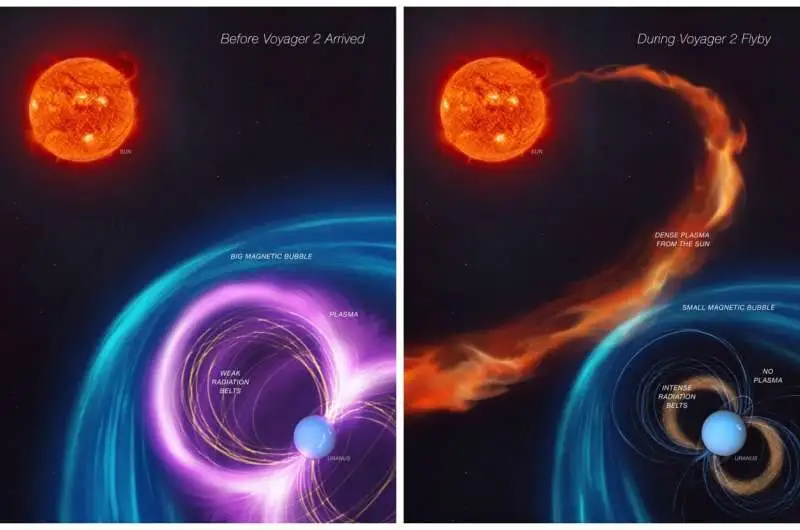When, in 1986, NASA’s Voyager 2 flew by Uranus along the historic path, it became the only spacecraft to visit that far-off gas giant. Among the most salient discoveries it made in Uranus was a highly peculiar magnetic field. In contrast with the Earth’s magnetic field, aligned with the rotational axis, the field of Uranus is tilted 59 degrees and offset relative to the center of the planet. This misalignment creates a fantastically asymmetric magnetosphere that twists and turns as the planet rotates.
The unusual structure runs counter to the planets and is responsible for complex interactions with the solar wind that extend this twisted magnetic “tail” for millions of kilometers into space.
Could Uranus’ Atmosphere Be More Active Than It Looks?
Early images from Voyager 2 suggested a quite featureless atmosphere, but reanalysis suggested the occurrence of subtle weather. Uranus seemed rather bland compared to storm-racked planets like Jupiter and Saturn. Some recent surprises have turned up, however. In 2023, astronomers detected a polar cyclone first ever seen at Uranus’s north pole. The discovery of swirling cloud bands and sporadic storms proves that the atmosphere of Uranus is much more dynamic than previously assumed.
What Surprises Did Voyager 2 Uncover About Uranus’ Rings and Moons?
The Voyager 2 flyby brought in news about the discovery of two new rings and ten additional moons, adding members to the known family of Uranian satellites. The rings themselves do not resemble the bright, icy rings of Saturn but rather prove to be dark and faint, and probably composed of small rocky particles. Miranda was particularly interesting among the moons since it possesses varied, unusual terrain. It also has giant canyons, complicated fracturing, and evidence of tectonic activity which point to a very interesting geological history.
Is Uranus Slowly Losing Its Atmosphere?
Decades from the flyby, Voyager 2 is still yielding secrets. In 2020, scientists reanalyzing the mission’s recordings found a “plasmoid” a huge magnetic bubble that suggests that Uranus is leaking its atmosphere into space. All this hints at the atmospheric processes needing to be understood and raises new questions about the evolution of Uranus and other far-flung planets. As scientists go further, Voyager 2’s legacy sends a message that there needs to be another mission to Uranus to help us delve into this cold, enigmatic giant.




